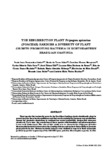Por favor, use este identificador para citar o enlazar este ítem:
http://www.alice.cnptia.embrapa.br/alice/handle/doc/1023976Registro completo de metadatos
| Campo DC | Valor | Lengua/Idioma |
|---|---|---|
| dc.contributor.author | FERNANDES JUNIOR, P. I. | pt_BR |
| dc.contributor.author | AIDAR, S. de T. | pt_BR |
| dc.contributor.author | MORGANTE, C. V. | pt_BR |
| dc.contributor.author | GAVA, C. A. T. | pt_BR |
| dc.contributor.author | ZILLI, J. E. | pt_BR |
| dc.contributor.author | SOUZA, L. S. B. de | pt_BR |
| dc.contributor.author | MARINHO, R. de C. N. | pt_BR |
| dc.contributor.author | NÓBREGA, R. S. A. | pt_BR |
| dc.contributor.author | BRASIL, M. da S. | pt_BR |
| dc.contributor.author | SEIDO, S. L. | pt_BR |
| dc.contributor.author | MARTINS, L. M. V. | pt_BR |
| dc.date.accessioned | 2015-09-15T11:11:11Z | pt_BR |
| dc.date.available | 2015-09-15T11:11:11Z | pt_BR |
| dc.date.created | 2015-09-15 | pt_BR |
| dc.date.issued | 2015 | pt_BR |
| dc.identifier.citation | Revista Brasileira de Ciência do Solo, v. 39, p. 993-1002, 2015. | pt_BR |
| dc.identifier.uri | http://www.alice.cnptia.embrapa.br/alice/handle/doc/1023976 | pt_BR |
| dc.description | Plant species that naturally occur in the brazilian Caatinga (xeric shrubland) adapt in several ways to these harsh conditions, and that can be exploited to increase crop production. among the strategic adaptations to confront low water availability, desiccation tolerance stands out. Up to now, the association of those species with beneficial soil microorganisms is not well understood. The aim of this study was to characterize Tripogon spicatus diazotrophic bacterial isolates from the Caatinga biome and evaluate their ability to promote plant growth in rice. Sixteen bacterial isolates were studied in regard to their taxonomic position by partial sequencing of the 16S rRna gene, putative diazotrophic capacity, in vitro indole-acetic acid (IAA) production and calcium phosphate solubilization, metabolism of nine different C sources in semi-solid media, tolerance to different concentrations of NaCl to pHs and intrinsic resistance to nine antibiotics. Finally, the ability of the bacterial isolates to promote plant growth was evaluated using rice (Oryza sativa) as a model plant. Among the 16 isolates evaluated, eight of them were classified as Enterobacteriaceae members, related to Enterobacter and Pantoea genera. Six other bacteria were related to Bacillus, and the remaining two were related to Rhizobium and Stenotrophomonas. The evaluation of total nincorporation into the semi-solid medium indicated that all the bacteria studied have putative diazotrophic capacity. Two bacteria were able to produce more IAA than that observed for the strain BR 11175 of Herbaspirillum seropedicae. Bacterial isolates were also able to form a microaerophilic pellicle in a semi-solid medium supplemented with different NaCl concentrations up to 1.27 mol l-1. intrinsic resistance to antibiotics and the metabolism of different C sources indicated a great variation in physiological profile. Seven isolates were able to promote rice growth, and two bacteria were more efficient than the reference strain Azospirillum brasilense, ab-v5. The results indicate the potential of T. spicatus as native plant source of plant growth promoting bacteria. | pt_BR |
| dc.language.iso | eng | eng |
| dc.rights | openAccess | eng |
| dc.subject | Semiárido | pt_BR |
| dc.subject | Bioma Caatinga | pt_BR |
| dc.subject | Fixação biológica de nitrogênio | pt_BR |
| dc.subject | Bactérias diazotróficas | pt_BR |
| dc.subject | Plantas tolerantes à dessecação | pt_BR |
| dc.subject | Diazotrophic bacteria | pt_BR |
| dc.subject | Biological nitrogen fixation | pt_BR |
| dc.subject | Inoculant | pt_BR |
| dc.subject | Tolerant plants | pt_BR |
| dc.title | The resurrection plant tripogon spicatus (Poaceae) harbors a diversity of plant growth promoting bacteria in Northeastern Brazilian Caatinga. | pt_BR |
| dc.type | Artigo de periódico | pt_BR |
| dc.date.updated | 2016-01-28T11:11:11Z | pt_BR |
| dc.subject.thesagro | Solo | pt_BR |
| dc.subject.thesagro | Fixação de nitrogênio | pt_BR |
| dc.subject.thesagro | Inoculante | pt_BR |
| dc.subject.thesagro | Bactéria | pt_BR |
| dc.subject.thesagro | Caatinga | pt_BR |
| dc.subject.nalthesaurus | Soil | pt_BR |
| riaa.ainfo.id | 1023976 | pt_BR |
| riaa.ainfo.lastupdate | 2016-01-28 | pt_BR |
| dc.identifier.doi | 10.1590/01000683rbcs20140646 | pt_BR |
| dc.contributor.institution | PAULO IVAN FERNANDES JUNIOR, CPATSA | pt_BR |
| dc.contributor.institution | SAULO DE TARSO AIDAR, CPATSA | eng |
| dc.contributor.institution | CAROLINA VIANNA MORGANTE, CPATSA | eng |
| dc.contributor.institution | CARLOS ALBERTO TUAO GAVA, CPATSA | eng |
| dc.contributor.institution | JERRI EDSON ZILLI, CNPAB | eng |
| dc.contributor.institution | LAYANE SILVA BARBOSA DE SOUZA, UNIVERSIDADE DO ESTADO DA BAHIA | eng |
| dc.contributor.institution | RITA DE CÁSSIA NUNES MARINHO, UNIVERSIDADE FEDERAL DO PIAUÍ | eng |
| dc.contributor.institution | RAFAELA SIMÃO ABRAHÃO NÓBREGA, UNIVERSIDADE FEDERAL DO RECÔNCAVO DA BAHIA | eng |
| dc.contributor.institution | MARIVAINE DA SILVA BRASIL, UNIVERSIDADE FEDERAL DO MATO GROSSO DO SUL | eng |
| dc.contributor.institution | SIRANDO LIMA SEIDO LINDETE MÍRIA VIEIRA MARTINS, UNIVERSIDADE FEDERAL RURAL DE PERNAMBUCO | eng |
| dc.contributor.institution | LINDETE MÍRIA VIEIRA MARTINS, UNIVERSIDADE DO ESTADO DA BAHIA. | eng |
| Aparece en las colecciones: | Artigo em periódico indexado (CPATSA)  | |
Ficheros en este ítem:
| Fichero | Descripción | Tamaño | Formato | |
|---|---|---|---|---|
| PauloIvan2015.pdf | 229,35 kB | Adobe PDF |  Visualizar/Abrir |









